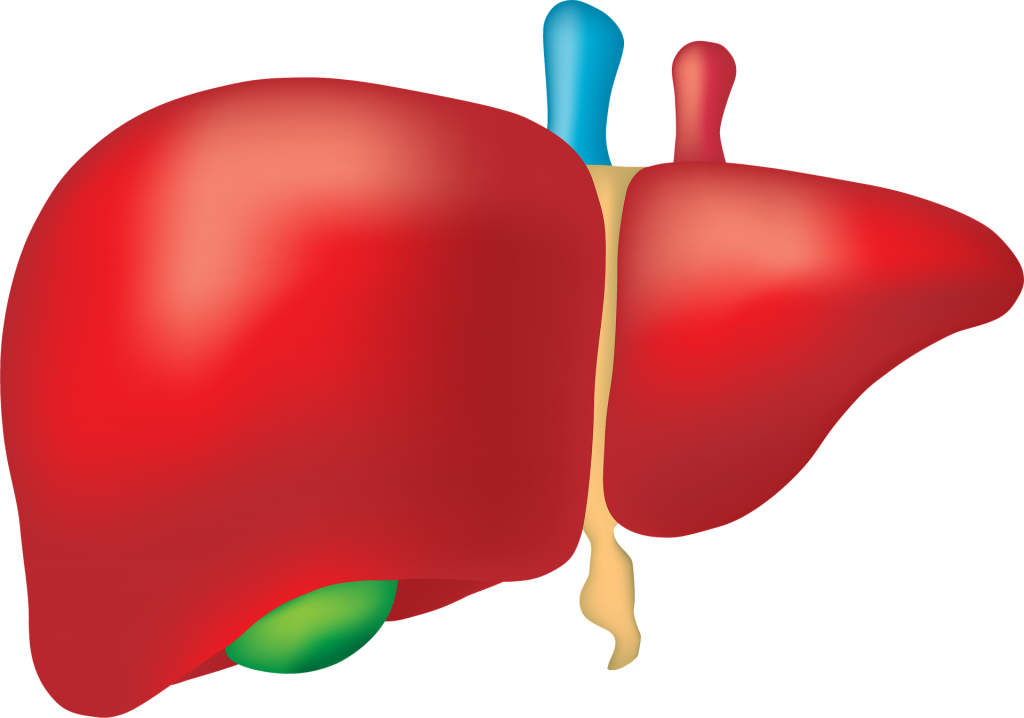How is the liver structured?
The liver sits in the upper right part of the abdomen, protected by the ribs. It is divided into two lobes, each made up of smaller ‘lobules’. These lobules are made up of liver cells, called hepatocytes.2
The liver receives blood from two vessels:
- The hepatic artery supplies the oxygen-rich blood2
- The portal vein supplies the nutrient-rich blood from the digestive system2
What are the tasks of the liver?
One of the main functions of the liver is metabolizing sugar, fats, and proteins. Glucose, a form of sugar, is broken down by the liver into a simpler form known as glycogen. The liver can then store this glycogen until it is required for energy, for example, during exercise, or periods of fasting.3
The liver also has a vital role in creating proteins from amino acids consumed through diet. Examples of proteins that the liver makes are clotting factors, which the body needs to stop bleeding, and hormones.3
Detoxification system of the body
The liver is responsible for breaking down many harmful substances that enter the body, such as drugs, medication, pollutants, and pesticides.4 It also detoxifies toxic substances that the body creates as by-products during other processes.3 For example, ammonia is produced as a by-product of body processes but is toxic to cells. The liver detoxifies the ammonia before the kidneys excrete it out in the urine. If ammonia is not detoxified and excreted, the levels in the blood can rise, which can have a dangerous effect on the brain, leading to coma and even death.3
One of the substances that the liver processes is alcohol5. When alcohol reaches the liver, the liver uses enzymes to break it down into less toxic substances that can be easily excreted6. In an average-sized person with normal liver function, the liver metabolizes (breaks down) alcohol at a rate of approximately 100-200mg an hour for every kilogram of body weight.5 In sustained high quantities, alcohol can negatively affect the liver and lead to liver disease.6
The liver has a unique ability to regenerate
If damaged, the liver can regenerate tissue to a certain extent. If the damage is extensive, however, the liver may not be able to regenerate. In this situation, a liver transplant is usually necessary.7
Healthcare teams utilize this remarkable regenerative function for liver transplantation. It is possible to take a liver section from a living donor and transplant it into a patient with liver disease. In this situation, both the donor and the patient will each have a functional liver section. Both liver sections can then increase in size through regeneration.7 A 2018 report stated that over 7300 liver transplants are performed annually, with living transplants becoming increasingly popular.8

Additional Information
References:
- The Hepatitis C Trust, Functions of the liver. Available at http://www.hepctrust.org.uk/information/liver/functions-liver (Last accessed October 2020)
- TeachMe Anatomy. The Liver. Available at: https://teachmeanatomy.info/abdomen/viscera/liver/ (Last accessed October 2020)
- TeachMe Physiology. Metabolic Functions of the Liver. Available at: https://teachmephysiology.com/gastrointestinal-system/liver/metabolic-functions-liver/ (Last accessed October 2020)
- The Hepatitis C Trust. Detoxification. Available at http://www.hepctrust.org.uk/information/liver/detoxification (Last accessed October 2020)
- Alcohol and Nutrition. Available at: https://www.medicinenet.com/alcohol_and_nutrition/article.htm#how_is_alcohol_metabolized (Last accessed October 2020)
- National Institute of Alcohol Abuse and Alcoholism, Alcohol Alert (2007).
- Mayo Clinic. Liver Regeneration. Available at:https://www.mayo.edu/research/centers-programs/center-regenerative-medicine/focus-areas/liver-regeneration (Last accessed October 2020)
- Adam R et al., 2018, Transplant International.; 31: 1293–1317
May 2021. GL-HEP-XIF-2000184




